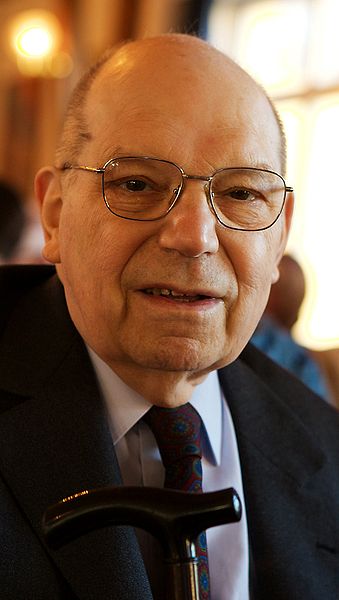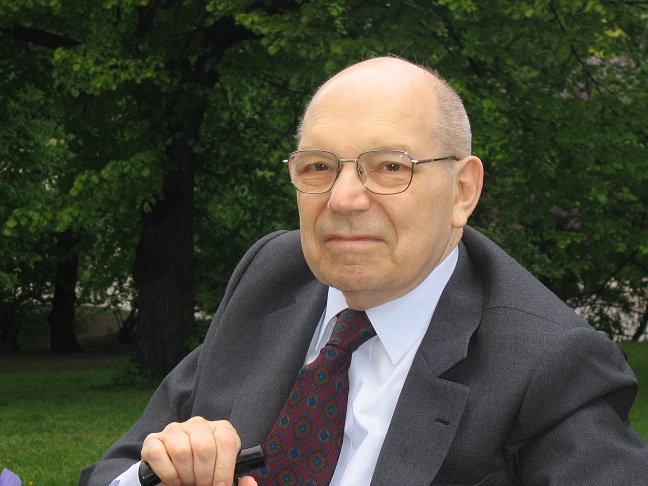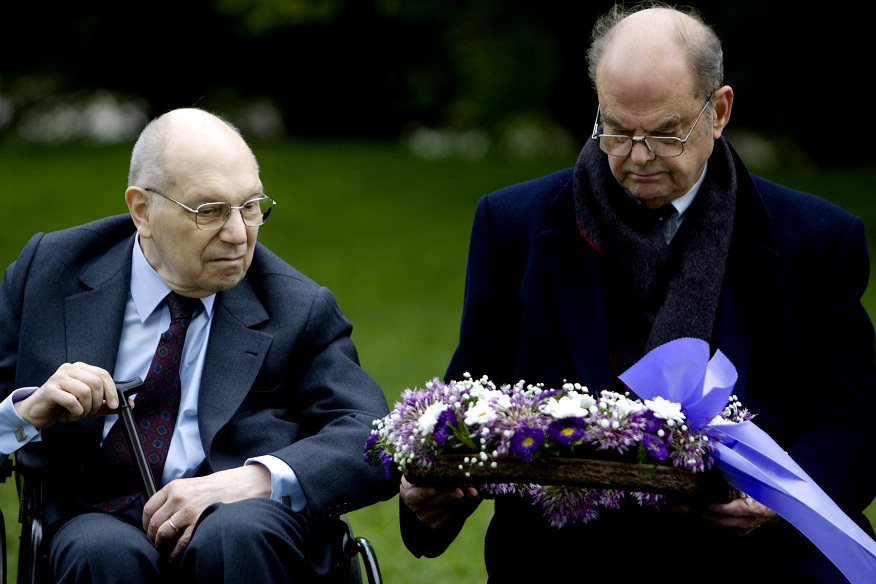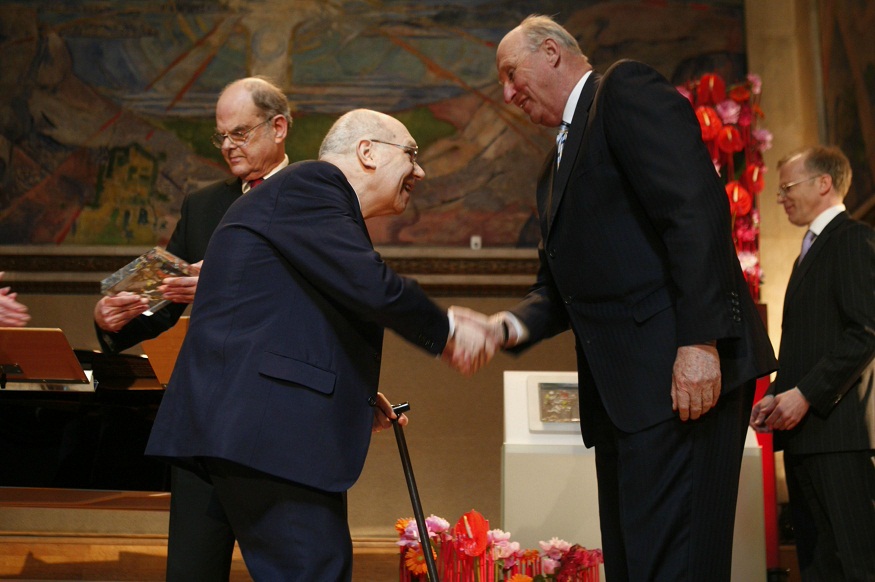<Back to Index>
- Mathematician Jacques Tits, 1930
- Dramatist Jacinto Benavente y Martínez, 1866
- 1st President of Singapore Yusof bin Ishak, 1910
PAGE SPONSOR


Jacques Tits (born 12 August 1930 in Uccle) is a Belgian and French mathematician who works on group theory and geometry and who introduced Tits buildings, the Tits alternative, and the Tits group.
Tits received his doctorate in mathematics at the age of 20. His academic career includes professorships at the Free University of Brussels (now split into the Université Libre de Bruxelles and the Vrije Universiteit Brussel) (1962 - 1964), the University of Bonn (1964 - 1974) and the Collège de France in Paris, until becoming emeritus in 2000. He changed his citizenship to French in 1974 in order to teach at the Collège de France, which at that point required French citizenship. Because Belgium does not allow dual nationalities, he renounced his Belgian citizenship. He has been a member of the French Academy of Sciences since then.
Tits was an "honorary" member of the Nicolas Bourbaki group; as such, he helped popularize Harold Scott MacDonald Coxeter's work, introducing terms such as Coxeter number, Coxeter group, and Coxeter graph.
Tits received the Wolf Prize in Mathematics in 1993, the Cantor Medal from the Deutsche Mathematiker - Vereinigung (German Mathematical Society) in 1996, and the German distinction "Pour le Mérite". In 2008 he was awarded the Abel Prize, along with John Griggs Thompson, “for their profound achievements in algebra and in particular for shaping modern group theory.” He is a member of several Academies of Sciences. He is a member of the Norwegian Academy of Science and Letters.
He introduced the theory of buildings (sometimes known as Tits buildings), which are combinatorial structures on which groups act, particularly in algebraic group theory (including finite groups, and groups defined over the p-adic numbers). The related theory of (B,N) pairs is a basic tool in the theory of groups of Lie type. Of particular importance is his classification of all irreducible buildings of spherical type and rank at least three, which involved classifying all polar spaces of rank at least three. In the rank-2 case spherical building are generalized n-gons, and in joint work with Richard Weiss he classified these when they admit a suitable group of symmetries (the so-called Moufang polygons). In collaboration with François Bruhat he developed the theory of affine buildings, and later he classified all irreducible buildings of affine type and rank at least four.
Another of his well known theorems is the "Tits alternative": if G is a finitely generated subgroup of a linear group, then either G has a solvable subgroup of finite index or it has a free subgroup of rank 2.
The Tits group and the Tits – Koecher construction are named after him.

